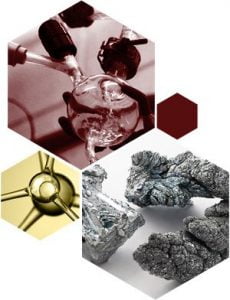
Yttrium (III) Acetate Tetrahydrate
Properties
- We can offer items in bulk or custom. For other quantities or purities, please request a quotation.
- All prices are subject to change.
Related Products
Information about Yttrium (III) Acetate Tetrahydrate / CAS 85949-60-6
Yttrium (III) acetate tetrahydrate, denoted as Y(CH₃COO)₃·4H₂O, is a water-soluble Yttrium compound that serves as a widely used precursor in material synthesis. This compound plays a crucial role in producing Yttrium-based materials, particularly Yttrium Oxide (Y₂O₃), which has multiple applications in electronics, optics, energy storage, and biomedical applications.
In materials science, Yttrium Oxide nanoparticles synthesized from Yttrium Acetate are recognized for their high thermal stability, chemical resistance, and optical transparency. These properties make them highly valuable in advanced ceramics, laser materials, and phosphor coatings. Y₂O₃ coatings are also widely used in semiconductors and photonic devices due to their ability to withstand extreme environments while maintaining structural integrity.
Yttrium Acetate is commonly used as a precursor for fabricating Y₂O₃ thin films via the sol-gel process. These films serve as high-quality insulating layers in microelectronics, particularly used by researchers developing new field-effect transistors (FETs), capacitors, and protective optical coatings.
In biomedical research, Yttrium compounds derived from Yttrium Acetate tetrahydrate are being investigated for potential use in bioactive glasses, ceramic scaffolds, and drug delivery systems. Studies suggest that the incorporation of yttrium may improve mechanical strength, bioactivity, and cell adhesion properties in these materials. Additionally, Yttrium exhibits antimicrobial effects, contributing to the development of infection-resistant coatings for medical devices and implants.
The aerospace and energy sectors have also realized benefit from Yttrium-stabilized materials.
Yttria-stabilized zirconia (YSZ), synthesized using yttrium acetate as a precursor, may be used in thermal barrier coatings (TBCs), fuel cells, and high-temperature structural ceramics. YSZ exhibits exceptional ionic conductivity and mechanical durability, making it a critical material in solid oxide fuel cells (SOFCs) and jet engine coatings.
- Ribot, F., Toledano, P., & Sanchez, C. (1991). X-ray and spectroscopic investigations of the structure of yttrium acetate tetrahydrate. Inorganica chimica acta, 185(2), 239-245.
- Farjas, J., Camps, J., Roura, P., Ricart, S., Puig, T., & Obradors, X. (2011). Thermoanalytical study of the formation mechanism of yttria from yttrium acetate. Thermochimica acta, 521(1-2), 84-89.


